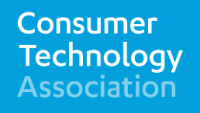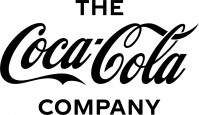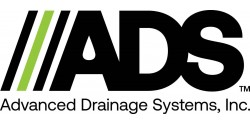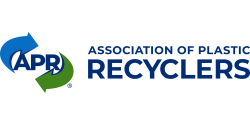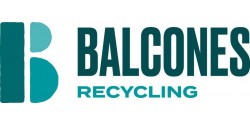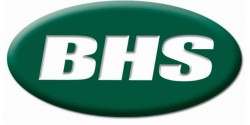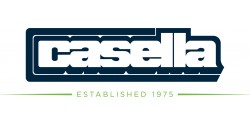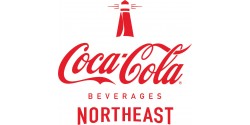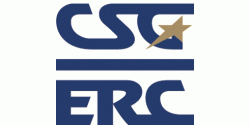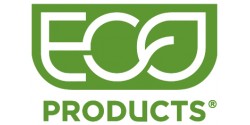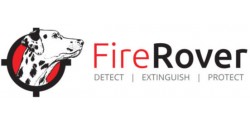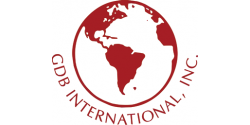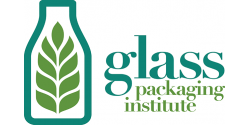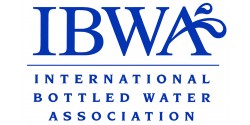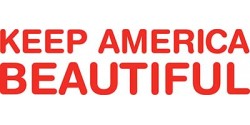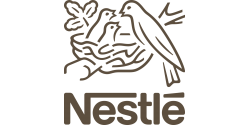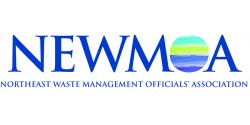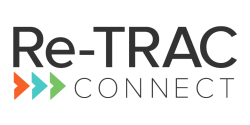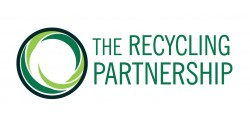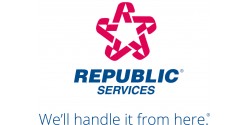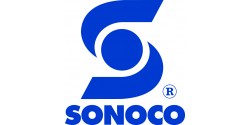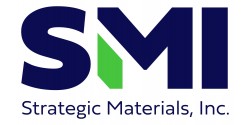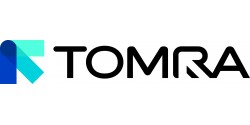April 2014
MEMBERSHIP
New Sustaining Member
Renewing Sustaining Member
Spotlight on Advisory Members - New Membership Benefit Launched
NERC NEWS
- Create an Effective Organics Facility at NERC’s Workshop
- NERC Shines a Spotlight on its Advisory Members - Samsung
- New Listserv for Advancing Organics Management in the Northeast
- New Hampshire Webinars on Reducing & Diverting Food Scraps – Open to All
- Organics Management in Action in Small & Tribal Communities—Opportunities & Case Studies - A Free National Webinar in Two Parts
- NERC Staff to Address Tribal Summit
- NERC Blog Worth Repeating: Reuse—It Deserves More Attention!
NEWLY POSTED
TOXICS IN PACKAGING CLEARINGHOUSE NEWS
STATE UPDATES
CONNECTICUT
- Curbside Organics Collection Pilot Begins in Bridgewater
- CT DEEP Joins U.S. Food Waste Challenge
- New Food Waste Reduction & Organics Recycling Resources
- Save the Date: Carpet Stewardship Dialogue, May 14 & 15
VERMONT
ADVISORY MEMBER NEWS
OF GENERAL INTEREST
NERC’s mission is to promote sustainable materials management by supporting traditional and innovative solid waste best practices, focusing on waste prevention, toxics reduction, reuse, recycling and organics recovery.
State and Advisory Member Updates, as well articles of General Interest and guest blogs are provided as submissions to NERC and may not reflect the policy or position of the Northeast Recycling Council, Inc.
NERC is an equal opportunity provider and employer.
We are delighted to welcome Dart Container as a new Sustaining Member of NERC, and the Steel Recycling Institute (SRI) as a renewing Sustaining Member.
A hallmark of NERC is the strength of multi-stakeholder involvement and problem solving. This is a direct result of the active participation and support of NERC's Advisory Members. NERC has 50 Advisory Members and Individual Supporters. To see a complete listing and the benefits of membership, visit the NERC Advisory Membership web page.
The broad spectrum of interests represented by NERC's Advisory Members, Individual Supporters, and Board Members and their willingness to participate significantly contribute to the unique and important role that NERC plays in recycling in the region.
Spotlight on Advisory Members - New Membership Benefit Launched
With the publication of a "Spotlight on Samsung", NERC is delighted to announce that it has added a membership benefit for its Distinguished and Sustaining Members. A monthly “Member Spotlight” will be published in the NERC Email Bulletin and posted on the NERC website. It will stay on the website after its initial publication. A new area of the Advisory Membership section of the website has been added to accommodate this.
The first Spotlight is our Distinguished Member – Samsung. Next month, the Spotlight will shine on the Steel Recycling Institute. After that, we will be presenting the Spotlights in order of membership tenure – in other words, they will be published in the order of the longest continuing membership. For more information, contact Lynn Rubinstein, NERC Executive Director.
NERC NEWS
Create an Effective Organics Facility at NERC’s Workshop
For more information about the Workshop sessions and presenters, go to the Agenda.
Workshop Dates: April 15 – 16, 2014
Location: Haraseeket Inn, Freeport, Maine
PLATINUM SPONSORS
Sponsorship & Exhibitor Space Available
For more information, contact Mary Ann Remolador, NERC's Assistant Director & Events Organizer.
NERC Shines a Spotlight on its Advisory Members - Samsung
Samsung is a dive rse company involved in advanced technology, semiconductors, skyscraper and plant construction, petrochemicals, fashion, medicine, finance, and more. For recyclers and green purchasers, it is Samsung Electronics that is probably most familiar. It has been a leader in the global electronics and components market with a long-term commitment to sustainability for more than 70 years. Samsung has a well-deserved reputation as a world leader in innovation, vision, and in global responsibility. It upholds a belief in “shared responsibility – to our people, our planet and our society.”
rse company involved in advanced technology, semiconductors, skyscraper and plant construction, petrochemicals, fashion, medicine, finance, and more. For recyclers and green purchasers, it is Samsung Electronics that is probably most familiar. It has been a leader in the global electronics and components market with a long-term commitment to sustainability for more than 70 years. Samsung has a well-deserved reputation as a world leader in innovation, vision, and in global responsibility. It upholds a belief in “shared responsibility – to our people, our planet and our society.”
Vision 2020
The overarching vision that guides Samsung Electronics’ Vision 2020 framework is “Inspire the World, Create the Future.” This vision expresses the company’s commitment to creating a new future that positively impacts the entire global community through innovations in technology, products, and solutions while maximizing value creation for its customers, employees, and society as a whole. For those of us working in the environmental field, Samsung’s Vision 2020 integrates corporate management and sustainable development which has been playing an increasing role in conducting business around the world.
Environmental Commitment
Samsung’s Environmental Programs stem from the company’s attested belief that it is their responsibility to do business in a way that enriches the planet. The company has established a reputation for delivering innovative eco-friendly products to consumers and its commitment to product stewardship throughout the entire lifecycle of its products.
The company’s green management policy guides and supports the continuous enhancement of a greener environment through all of its business activities including product design, manufacturing process and workplace operations. Samsung’s environmental commitment and transparency is apparent on its website where its programs and progress are outlined in its Eco-Management Framework.
The Samsung Recycling Direct (SRD) Program supports responsible management of e-scrap material and opposes export of unprocessed materials to developing countries. Numerous SRD drop off locations accept Samsung-branded and non-Samsung-branded consumer electronics for no fee. As a testament to its commitment to responsible recycling, Samsung is a Distinguished Sponsor of the State Electronics Challenge. In addition, Samsung is a member of EPA's Green Power Partnership and uses renewable energy at several of its facilities, including its semiconductor facility in Austin, where Samsung purchases renewable energy credits in wind to offset a portion of its manufacturing operations, and its solar-powered space in Los Angeles. In 2013, Samsung improved its average product energy efficiency by more than 30% compared to BAU in 2008 and has reduced GHG emissions by an accumulated total of 88.6 million tons since 2009.
More than a thousand Samsung products carry the ENERGY STAR label. Samsung has been recognized as ENERGY STAR Partner of the Year for the last three years, culminating in the Sustained Excellence Award in 2013. Its UN55H7150 Smart LED TV, WF9000 Front-Load Laundry Pair, and DV457 Front-Load Dryer were given Eco-Design awards at 2014 Consumer Electronics Show.
“Our Eco-Management philosophy puts the environment first as we continue to develop, engineer, and design innovative products and solutions to inspire and meet the needs of our customers,” said Michael Moss, Samsung’s Director of Corporate Environmental Affairs. “At Samsung we strive to provide a ‘green experience’ through our eco-friendly products, solutions and technologies that benefit our customers’ lives, while upholding our shared values and affirming our respect for the planet. The commitment is also expressed in our support for organizations such as NERC and the State Electronics Challenge.”
Samsung and NERC
Samsung has been a Benefactor of NERC (our highest Advisory Member Level) since 2011. The compan y is also a founding member of the Electronics Recycling Coordination Clearinghouse, a program created by NERC in collaboration with the National Center for Electronics Recycling. Samsung has won recognition from NERC for three consecutive years for its environmental leadership and outstanding commitment to energy conservation, green design, and responsible recycling with its continuing Distinguished Sponsorship of the State Electronics Challenge, NERC’s national program that supports sustainable lifecycle management of electronics in the public sector.
y is also a founding member of the Electronics Recycling Coordination Clearinghouse, a program created by NERC in collaboration with the National Center for Electronics Recycling. Samsung has won recognition from NERC for three consecutive years for its environmental leadership and outstanding commitment to energy conservation, green design, and responsible recycling with its continuing Distinguished Sponsorship of the State Electronics Challenge, NERC’s national program that supports sustainable lifecycle management of electronics in the public sector.
New Listserv for Advancing Organics Management in the Northeast
NERC is launching a new listserv to advance organics management in the Northeast, and you’re invited to join.
The listserv is an opportunity to share information about what’s happening with organics management. It’s a unique resource since it will be open to anyone interested in advancing organics diversion in the Northeast through promotion of the organics management hierarchy (e.g., reduction, recovery, recycling [composting], and anaerobic digestion).
Why an organics forum?
NERC’s Organic Management Listserv will provide a forum to share information, questions, ideas, and concerns on regulations and strategies for promoting organics diversion; updates on existing or upcoming related programs, projects, services, initiatives, goals, events; identifying ways to advance organics diversion through reduction, recovery, composting, and anaerobic digestion; and business development.
Who can join? The listserv will be open to anyone (e.g., government, businesses, non-profits, institutions, and other interested parties). The listserv will be free. Listserv “rules and etiquette” will be established and posted to discourage “sales pitches” and other discussions deemed not appropriate. NERC will administer the listserv sign-up process and monitor discussions to ensure the appropriateness of dialogues.
What do we mean by organics?
- Of, relating to, or derived from living organisms: organic matter
- Yard and landscape trimmings—leaves, grass clippings, & tree & brush trimmings
- Agricultural and land-clearing/forestry debris
- Manures and biosolids
- Food scraps and food processing residues
- Non-recyclable/soiled paper—napkins, paper towels, pizza boxes & other paper products
- Items manufactured from organics—compostable bags, utensils, plates, cups and bowls made from corn and potato starch, bagasse, PLA and similar materials
Some Suggestions for Discussion Topics:
- Organics management hierarchy—reduction, recovery, recycling (composting), anaerobic digestion
- Food scrap recovery in action - Case studies of existing programs
- Integrating food scrap collection and processing into existing organics management programs
- Program ideas, questions, what works, lessons learned
- New collection ideas; collection technologies and equipment
- Processing technologies and equipment
- Program issues, solutions, troubleshooting
- Public promotion, overcoming the “yuck factor”
- Compostable packaging
- Type & amount of packaging used to deliver food and food service supplies.
- More!
Listserv Requirement: The listserv will be Yahoo-based. A Yahoo email account is required to participate in the listserv, or log in can also be done through a Facebook account. Once you are a member of the listserv, you can elect to use a non-Yahoo email address.
To join the listserv: https://groups.yahoo.com/neo/groups/OrganicsManagementNE/inf
New Hampshire Webinars on Reducing & Diverting Food Scraps – Open to All
This two-part webinar is eligible for credits for New Hampshire Operator Certification; however it is open to anyone to participate.
Part 1: April 23, 10 – 11:30 am Eastern
Food Scrap Reduction and Composting at Home and On-Farm – Models that Work
Topics will include: reducing food waste at home; promoting home management of food scraps;
getting residents on board – promotion and outreach; and, on-farm composting.
Part 2: May 14, 10 – 11:30 am
Food Scrap Collection Options and Processing – Opportunities, Program Models, and Composting in Action
Topics will include: food scrap collection programs; food scrap processing options; and, food scrap composting in New Hampshire.
These webinars are being offered as part of a USDA Solid Waste Management grant.
For more information, contact Athena Lee Bradley, NERC Project Manager.
Organics Management in Action in Small & Tribal Communities—Opportunities & Case Studies - A Free National Webinar in Two Parts
This two-part webinar will feature a range of organics management and composting programs from around the country.
Topics to be addressed:
- Program examples
- Costs and funding
- Outreach and education
- Results and impacts
- Lessons learned
- Equipment, containers, and collection
Part 1: May 1, 1:00 pm Eastern
Focus on Food Scraps, Yard Waste, & Disaster Debris Management
Presenters will be:
- Jan Ameen, Franklin County Solid Waste District (Massachusetts) Executive Director
Municipal organics drop-off programs at transfer stations for collection of food scraps and soiled paper, as well as commercial collection of food scraps and soiled paper from restaurants.
- Steve Christman, Northeast Indiana Solid Waste Management District (NISWMD) Executive Director
Regional staffed organics drop-off centers and composting.
- Steve Tillotson, Division of Waste Management, North Dakota Department of Health, Assistant Director
Guidance to assist communities in the disaster debris recovery process.
Part Two: May 15, 1:00 pm Eastern
Reducing Food Scraps at Home & Management of Organics in Small & Tribal Communities
Presenters will be:
- Christine Beling, US EPA, Region 1, Project Engineer, Assistance and Pollution Prevention Unit, EPA’s Food Too Good to Waste program and toolkit
- Athena Lee Bradley, Northeast Recycling Council (NERC), Projects Manager,
Case studies on reducing organics discards, food recovery, backyard and neighborhood composting, commercial organics recycling, collection options, onsite municipal composting, and regional organics management.
- Michael B. Whitt, Shakopee Mdewakanton Sioux Community (Minnesota), Environmental Compliance Manager
Discussion of the Shakopee Mdewakanton Sioux Community’s Organics Recycling Facility which processes all organic materials including, brush, leaves, food scraps, and paper waste.
For more information on the webinars or on NERC’s organics management project, contact Athena Lee Bradley. The webinars are funded in part by a grant from the Rural Utilities Service, Solid Waste Management, United States Department of Agriculture.
NERC Staff to Address Tribal Summit
NERC’s Project Manager, Athena Lee Bradley, will be speaking on organics management at the Tribal Utility Summit in April. Her presentation, “Managing Food Scraps and Organics through Composting: Community and Home-based Applications,” will provide an overview of best management practices, strategies, opportunities, and action for recycling organics. Applications and case studies will be used to describe integration of food scraps into home composting (tips and issues), food scrap and organics collection options (including drop-off), and cost-effective compost operations to fit the needs of Tribal communities.
The Tribal Utility Summit is a collaborative effort between the United South and Eastern Tribes, Inc. (USET), U.S. Environmental Protection Agency (EPA), and the Indian Health Service (IHS). The Summit addresses a range of utility-related issues, including: drinking water treatment, wastewater treatment, solid waste, and utility management. This year’s Summit is hosted by the Mashantucket Pequot Tribal Nation in Mashantucket, Connecticut.
NERC Blog Worth Repeating: Reuse—It Deserves More Attention!
NERC’s Blog Worth Repeating, Reuse—It Deserves More Attention!, was first posted on March 11, 2014. Be sure to sign-up to receive the NERC Blog on a regular basis! We welcome guest articles as well; contact Athena Lee Bradley.
Reuse is at the top of the waste management hierarchy; however, it seldom receives the attention that recycling does. Beyond some basic promotional material development, relatively few municipalities and regional governments include reuse in there program development. Reuse is most generally defined as the “use of a product more than once in its same form for the same or similar purpose.” Incorporating reuse in a waste management program assists communities to protect the environment while saving money and returning products and materials back into the economy benefiting society.
Economic & Social Benefits of Reuse
The economic value of recovered materials as reusable products (either as is, refurbished, repaired, or repurposed) can often provide greater economic and social benefits to a community than recycling. Reuse allows the value of materials to stay within the community, rather than sending value to recycling businesses outside the community or immediate region. More isolated small and Tribal communities can particularly benefit from reuse as recycling businesses are often located in high population communities or near transportation nodes to achieve economies of scale, making transportation of recyclables to market costly.
By contrast, reuse opportunities can thrive in smaller communities and contribute in significant ways to decreased solid waste generation and the local economy. Urban areas as well gain from keeping reusable resources local and supporting reuse businesses. Textiles and other items sold to regional or export markets also return monies to the local economy. Reuse, remanufacturing, repair, and refurbishment of products and parts can be economically beneficial for industry as well.
Reuse encourages innovative, low cost, flexible, and local solutions to waste management.
Communities benefit from avoided landfilling and transportation costs associated with shipping waste or recyclables out of the area. Reduced waste and transportation costs also translate into reduced pollution. Reuse can help businesses and local economies by creating jobs for refurbishing and selling materials, providing revenues for non-profit organizations, benefitting schools, and helping to keep reusable items within the community. And, especially in lower income communities, families benefit from opportunities to find free or low-cost, usable items.
In the United States, secondhand markets are billion dollar industries. Each year an estimated 40 million used cars are sold in the United States, nearly three times the number of new cars purchased. The amount of material processed through secondhand markets in this country is nearly as large as consumer recycling, while the economic value of secondhand markets is estimated to be far greater than that for recycling.[2]
Environmental Benefits of Reuse
Waste is not just created when items are tossed in the garbage. Waste is generated throughout the life cycle of a product, from extraction of raw materials, to transportation and processing, and finally to its use and disposal. Reusing an item means that it continues to be a valuable, useful, and a productive item, replacing the need for new items that would utilize more water, energy, timber, petroleum, and other limited natural resources in their manufacture.
By reusing usable and salvageable items, substantial decreases in solid waste generation, greenhouse gases, energy and water consumption, and pollution can be achieved. For example, one ton of reused textiles saves more than 3 million gallons of water, 1,318 pounds of fertilizer, and 391 ounces of pesticides.[3] Reusing and recycling the raw materials from end-of-life electronics conserves natural resources and avoids the air and water pollution, as well as greenhouse gas emissions that are caused by manufacturing new products. Reuse reduces the need to use natural resources to manufacture new products.
Giving Reuse More Attention
Government agencies and organizations can help to expand reuse in their communities by sponsoring ongoing reuse programs, such as material exchanges, teacher supply depots, and reuse sheds. Special events, including toy and “kid’s stuff” swaps, community-wide tag sales, textile drives, sports equipment exchange, and similar events bring numerous social and economic benefits to community residents. Government agencies can help to promote reuse by developing listings of ongoing reuse activities, thrift stores, and building reuse stores (e.g., “ReStores”) in their region.
Used goods are commonly available to industries, businesses, institutions, and individual consumers. “Secondhand” markets for manufacturing facilities—from textiles to chemical production—provide access to usable equipment and materials. Used industrial, construction, and medical equipment are also readily available. Used goods for individuals include cars, clothes, books, furniture, household items, sports equipment, musical instruments, and more. Sources of used goods include on-line auctions and markets for both commercial and individual consumers, secondhand stores, reuse building material stores, classified advertisements, estate sales, auctions, rummage sales, yard sales, salvage yards, materials exchanges, and trash salvaging or "dumpster diving."
Some reuse resources:
By Athena Lee Bradley, NERC Projects Manager
[2] http://www.pollutionissues.com/Re-Sy/Reuse.html#ixzz2vU11dup4
NEWLY POSTED
Carpet Infrastructure in the Northeast - Updated & Revised
For many years, NERC has maintained a resource on its website entitled Carpet Recycling Infrastructure in the Northeast. This document has been newly update and expanded. Carpet recycling is once again a topic of focused activity in the Northeast, as demonstrated by the upcoming Carpet Stewardship Dialogue in Connecticut, and the anticipated addition in the region of several new companies involved in carpet recycling. The document will be updated - and announced in the NERC Email Bulletin - when the new businesses begin offering their services. For more information, contact Lynn Rubinstein, NERC Executive Director. TOXICS IN PACKAGING CLEARINGHOUSE NEWS
TPCH Finds Some Imported Wine Bottles Non-compliant with State Laws
Recent screening of glass bottles by the Toxics in Packaging Clearinghouse (TPCH) indicated that some wine bottles may exceed allowable levels of lead in packaging. State toxics in packaging laws prohibit the sale and distribution of packaging with greater than a total of 100 ppm four metals – lead, cadmium, mercury, and hexavalent chromium – combined.
Some green wine bottles originating in South America and Europe were found by TPCH to exceed the 100 ppm regulatory limit, using x-ray fluorescent (XRF) spectroscopy. In at least one case, the amount of lead in the wine bottle was 10 times greater than the regulatory threshold. There was no incidence of non-compliance for bottles used to package wine originating in the U.S., including California, Oregon and Washington.
“Importers and distributors of wine should be monitoring bottles for compliance with state toxic in packaging laws”, stated TPCH Chair David Westcott of the Connecticut Department of Energy and Environmental Protection. “Companies should ask their suppliers to provide a certificate of compliance for bottles or have bottles tested here in the U.S. for compliance with state laws. A small investment in testing will be less costly than removing wine bottles from retail shelves and the resultant damage to their brand.”
TPCH Releases Report & Guidance For Testing Glass Bottles
The TPCH released a report with recommendations for testing glass containers for compliance with state toxics in packaging laws last month. The research was funded by the California Department of Toxic Substances Control, and continues TPCH efforts to provide guidance to laboratories and regulated entities to ensure compliance with state laws.
For this study, TPCH sent glass samples containing known concentrations of lead to nine commercial laboratories in the U.S. and one laboratory in Europe for testing. The results indicated that U.S Environmental Protection Agency SW-846 Method 3052, Microwave Assisted Acid Digestion of Siliceous and Organically Based Matrices, and comparable sample preparation methods using hydrofluoric acid (HF) for silica-based materials like glass were effective in determining total lead content. Methods using HF without the application of an external heat source such as microwave, oven bomb or hot plate did not perform as well.
“Some testing laboratories are using EPA Method 3050B, which is a sample preparation method intended to measure ‘total recoverable metals’ or leachable metals. This test method is inadequate in determining compliance with state toxics in packaging laws, which establish thresholds for total concentration, emphasized Alex Stone, Senior Chemist in the Washington State Department of Ecology. “Laboratories using Method 3050B – which was developed for detecting leachable metals in soil samples – failed to detect any lead in the glass samples.”
TPCH and its member states also promote the use of XRF spectroscopy for screening glass matrix samples for compliance with state toxics in packaging laws. XRF spectroscopy offers an alternative to EPA Method 3052 and the use of HF and provides for non-destructive analysis of metals in glass matrices.
The report,Glass Matrix Test Methods Evaluation for Toxics in Packaging, is available for free download from the TPCH website. The newly released Guidance on Analysis of Glass Matrices for Toxics in Packaging is also available.
STATE UPDATES
CONNECTICUT
Curbside Organics Collection Pilot Begins in Bridgewater
 The Housatonic Resource Recovery Authority (HRRA), in partnership with the Town of Bridgewater, launched a Residential Organics (food scraps) Curbside Pilot Program on March 11th. It is the first of its kind in the state of Connecticut.
The Housatonic Resource Recovery Authority (HRRA), in partnership with the Town of Bridgewater, launched a Residential Organics (food scraps) Curbside Pilot Program on March 11th. It is the first of its kind in the state of Connecticut.
HRRA chose Bridgewater based on the town's small size, the support of its elected leaders and its geographic proximity to the organic recycling facilities. In addition, the hauler that collects from 92% of the routes in town, All American Waste, was supportive and willing to pilot the 6-month program for free.
As of early March, there were 130 residents signed-up for the program, representing 12% of the town. In addition, local businesses including the Village Store, Parker Medical and the Bridgewater Congregational Church and Burnham School are also participating. The program will run at no cost to participants for 6 months.
All American Waste will pick up the organic material once a week from residents and bring it to one of two state permitted facilities in the region (New Milford Farms and/or New England Compost of Danbury). The material will be processed into compost. Participants will receive vouchers for a bag of free compost from the processors.
At the end of 6 months, HRRA and All American Waste will analyze the results of the pilot and decide whether to roll out to other communities within the Authority. HRR
The program was kicked-off on March 11th when participants were provided more information and their free collection kits (one kitchen counter collection bin, one 6 gallon curbside bin, 6 months of compostable bags, and an information packet). The program is scheduled to begin the first week in April. For more information, please contact Jen Iannucci at HRRA.
CT DEEP Joins U.S. Food Waste Challenge
CT DEEP is proud to be the first state government agency to have joined the U.S. Food Waste Challenge, which is a sister program of EPA’s Food Recovery Challenge. A new web page, Office Food Scrap Composting at DEEP Headquarters has been published to document our program for inclusion in the Challenge. DEEP has been collecting food scrap and soiled paper from their 6-story office building and composting it on-site since 1997. The program has diverted over 75 tons of spoiled food and soiled paper from the waste stream, avoided $3,614 in disposal fees and has saved $1,880 in soil amendment purchases. Although small, it demonstrates state government leading by example, and has served as an education tool for staff, stakeholders, and visitors.
New Food Waste Reduction & Organics Recycling Resources
DEEP has new and expanded web pages on food scraps & organics recycling. The Composting & Organics Recycling page, accessed from the main Reduce/Reuse/Recycle page, has been expanded. In addition, the Large Scale Organics Management page, and the Commercial & Institutional Food Scrap Recycling Pilot Projects page, both accessible from the Composting and Organics Recycling page, have been expanded.
DEEP has also created a new webpage Food Waste Reduction & Recovery to promote food waste reduction and food recovery efforts in Connecticut. The page provides information and resources for residents, businesses and institutions. Part of the research for this new page included reaching out to farms to better understand if there were any gleaning activities or perhaps gleaning networks in Connecticut. While a network was not uncovered, the survey did discover small pockets of farms that donate materials directly or allow small numbers of volunteers on their farms to glean leftover/unharvested crops to distribute to food banks and food pantries.
These farms, while small in number, wanted to know more about how to connect with others who were gleaning, who might help glean or talk about food waste reduction generally. As a result, DEEP has joined the CT Food System Alliance (CFSA) and will help facilitate a new “food waste action team”, working to create a robust local food system. The first meeting, originally scheduled for February 2014, was postponed due to weather.
For more information about Organics Recycling or Food Recovery/CFSA Food Waste Team Sherill Baldwin, CT DEEP.
Save the Date: Carpet Stewardship Dialogue, May 14 & 15
DEEP is hosting a two-day dialogue for carpet stewardship at its headquarters in Hartford on May 14-15, 2014. During the dialogue, current regional and national recycling issues affecting carpet recycling will be explored, including high costs, changing material streams and lack of end-markets, and how carpet stewardship policy could play a role in resolving these issues.
This event will bring stakeholders from around the country, including: carpet manufacturers, recyclers, retailers and installers; renovation, demolition and deconstruction contractors; local, state and federal government officials; and environmental organizations.
The Product Stewardship Institute (PSI) is coordinating and facilitating the dialogue. A phone-in option will be available for those unable to join the meeting in-person. Registration details will be provided soon.
The Connecticut Recyclers Coalition and the Connecticut Product Stewardship Council are helping to sponsor this event. Additional sponsorship opportunities are available.
VERMONT
Concerned Mom, Community Bring Universal Recycling to the Northfield School District
 This is the story of how a small group of people made a very big difference in their community. It starts with a mom, and a question. What happened next can be an inspiration for us all.
This is the story of how a small group of people made a very big difference in their community. It starts with a mom, and a question. What happened next can be an inspiration for us all.
Trish Coppolino's daughter started kindergarten this year. After awhile, she noticed that her daughter came home each afternoon with an empty lunchbox. "Her lunchbox was empty of all of the food and wrappers that I had sent with her to school, so I asked her what she did with them. She told me that she threw them in the garbage." Trish shared recently. "So, that's where it started."
After attending a local PTO meeting, Coppolino learned that the Northfield School District was neither recycling (in the cafeteria) nor capturing food wastes. "They told me that historically it used to happen at the school," Coppolino shared, "but four years ago the town of Northfield opted out of the Central Vermont Waste Management District, and went with the Mad River Solid Waste Alliance instead. They don't offer food diversion or composting." Because of a lack of budget and no way to dispose of the waste, the school did away with the fledgling food diversion program.
There was no lack of desire to provide food diversion services, but there was no one who knew how to go about getting a program instituted. According to Coppolino, "It was something that everyone wanted to do, but they didn't know how. So I set about trying to figure out how to do it."
Trish Coppolino works as a Brownfields Program Manager for the Dept. of Environmental Conservation's Waste Management and Prevention Division. Although her work is not directly related to food diversion, she knew where to start looking for more information. "I went over to the solid waste program, four desks over," she shared. "I talked to staff there and asked them about other schools with composting programs. I wanted to know - is Northfield the only school out there that's not doing this? Where do I begin?" Her colleagues gave her some suggestions to start - a connection to the Highfields Composting Center in Hardwick, Vermont, the contact information of Bill Kirby, the head of building maintenance at the Northfield School District, and a potential funding source - a grant funded by the New England Grassroots Environment Foundation (NEGEF) out of Montpelier. "Between Josh [Kelly, her colleague at the DEC], Highfields, Bill Kirby at Northfield and Kristen Gadbois, the president of the Northfield PTO, I was able to write a grant request to NEGEF."
The problem of where to take food wastes was still outstanding. According to Coppolino, "I was also working on trying to find a composter because that was our larger issue. We needed someone who would actually take the food waste. Bill Kirby was adamant that the school couldn't pay someone to take it - there was no budget for it. He would rather compost on-site." Instead, Coppolino started reaching out to local farmers around Northfield, and eventually found Charlie Morse, who was not only willing, but enthusiastic at the idea of building a relationship with the school and taking on their food scrap waste. "We worked with Highfields Center for Composting to do technical assistance with Charlie [Morse] to get him ready to start taking the food scraps," Coppolino explained. Another coworker ran volume numbers and determined that Morse did not need a permit, since much of the food waste was being repurposed to feed his chickens.
In the meantime, the school was successful in getting their NEGEF grant. They received $2,000, and the Highfields Center agreed to do training with the students, teachers and staff. As the project moved forward and the group made progress, more people got excited and offered to help. A local hardware store donated buckets for the classrooms. A 5th-grade science teacher volunteered his students to be program monitors at the elementary school, and the high school Green Team agreed to perform the same role at the High School. The maintenance workers and cafeteria staff helped ensure that the food scraps made it from the classrooms to the totes, and Charlie Morse (the farmer) agreed to take on transportation of the food scraps from the school to his farm. Even the Mad River Solid Waste Alliance contributed, providing a soil-saver composter that the students were able to add to the school garden. Once supplies were purchased and a process was in place, the Highfields Center came in to the schools to provide education to all involved.
"They [Highfields] came into the schools, the Elementary and High School for a week, doing training for every single grade and all the teachers and staff, at no cost to the school," Coppolino stated. "They did a great job engaging the kids. I went to a couple of their trainings and the kids understood. The outreach was perfect for each grade and their energy and how they spoke to them was really good."
What about the future, I wanted to know. What happens once the $2,000 runs out? What about taking the model to other schools? "We started composting our food waste at the elementary school just a few weeks ago, on a Wednesday," Trish shared. "The high school started a week later. We were focused on food but we're getting ready to put recycling bins in the cafeteria. The high school will get their recycling bins tomorrow, and the elementary school will receive theirs in a couple of weeks. Charlie has also agreed to take the recyclable cups that the school is using to pass out fruit for the kids. He will use them to start seedlings, or put them through his wood chipper for use as animal bedding."
As for the costs, "I'm actually trying to figure out how to spend the money," said Coppolino. The school is saving money because they don't have to pay anyone to take the scraps away. The farmer is also saving money, getting chicken feed, compost and bedding materials at just the cost of the transportation. "We've hopefully set it up so that it is financially sustainable," Coppolino adds.
As for what is next, Coppolino is cautiously optimistic. "We're going to have a check in meeting in a month. The school staff has been taking notes about what is working and what isn't. At the next meeting we can sit down and talk about what changes need to happen. In a month we'll have an idea of whether we can use this as a pilot for other schools." Coppolino hopes so. "The school is saving money. The farmer is benefitting. Valuable materials are being diverted from landfills."
"And the kids are learning about environmental stewardship," Coppolino smiles, "which is all I wanted."
ADVISORY MEMBER NEWS
Green is Good Radio’s John Shegerian Named “#1 Male Green Talk Show Host on Radio” by Ecycle Best Blog
John Shegerian, host of America’s top green radio show, “Green is Good,” has been named the #1 male green talk show host on the radio by Ecycle Best, an electronic recycling blog. The blog recently published a ranking of its “Top 5 Best” male green radio hosts in the country with Shegerian topping the list at #1.
“It is very humbling to be mentioned alongside this list of outstanding and inspiring green radio hosts,” said Shegerian (who is also Chairman and CEO of Electronic Recyclers International, the nation’s leading recycler of electronic waste). “It’s a privilege to be able to offer this amazing forum where we meet and share ideas with our guests while inspiring listeners to think and act in more responsible and sustainable ways. I’m also very grateful to the good people at Ecycle Best and the Ecycle Best blog for the kind compliment.”
The national weekly “Green is Good” program is now available to listeners nationwide via the “America’s Talk” lineup on iHeartRadio and is also available free on iTunes as a podcast after each episode airs on iHeartRadio.
The program provides a spirited forum for a broad selection of leading green businesses and organizations, each taking unique measures to protect and sustain our planet, to share and discuss green business concepts and success stories.
In each show, Shegerian draws his guests into discussions about the environment and what businesses and individuals can do each day to follow the major tenets of sustainability – people, planet and profits.
For more information on Green is Good and airdate details, visit www.greenisgoodradio.com.
Electronic Recyclers International (ERI), the world’s largest privately held recycler of electronic waste, is R2 and e-Stewards certified to de-manufacture and recycle every type of electronic waste in an environmentally friendly manner. For more information about e-waste recycling and ERI, visit www.electronicrecyclers.com.
OF GENERAL INTEREST
New Toolkit Presents Resources for Foodservice Packaging Recovery
The Foodservice Packaging Institute (FPI) has released a toolkit geared to help communities, material recovery facilities and end markets reduce waste and potentially generate new revenue by recovering foodservice packaging.
The Foodservice Packaging Recovery Toolkit provides new resources, including what is recovered as well as how and where it’s collected and processed. The toolkit covers the common bale specifications with added foodservice packaging materials, too.
Developed by FPI’s Paper Recovery Alliance and Plastics Recovery Group, the toolkit features:
- Case studies highlighting successful programs in communities such as the cities of Seattle and Boise; in material recovery facilities like Burrtec in Riverside, Calif. and ReCommunity in Ann Arbor, Mich.; and thriving end markets like Earth Farms Organics in Charlotte, N.C. and NEPCO in Pomona, Calif.
- Interactive maps spotlighting potential end markets for foodservice packaging materials.
- Additional reports completed by the PRA and PRG, including a recent food residue study, which showed that foodservice packaging was no more contaminated than other food packaging commonly accepted in curbside collection programs.
“Recovering larger quantities of foodservice packaging is a complex challenge, and it requires that we look at recovery from many different perspectives,” said Lynn M. Dyer, FPI’s President. “This toolkit helps by answering the more common questions while showcasing successful recovery and even dispelling persistent myths that could hamper recovery progress.”
The Foodservice Packaging Recovery Toolkit can be found online at fpi.org/recovery. For more information on the work of FPI’s recovery project, contact FPI Vice President, Natha Dempsey.


